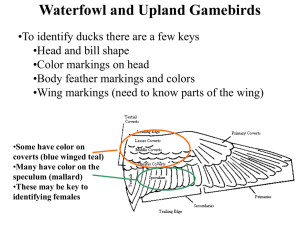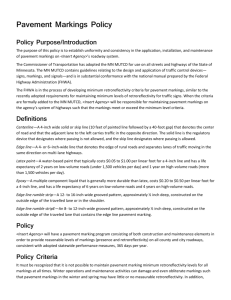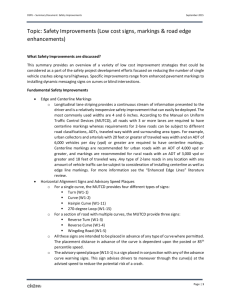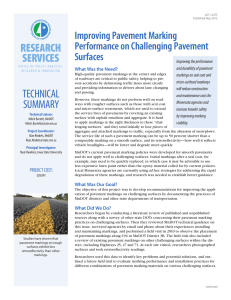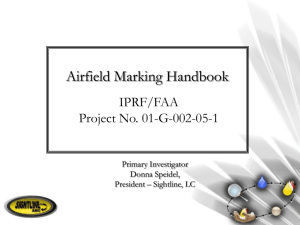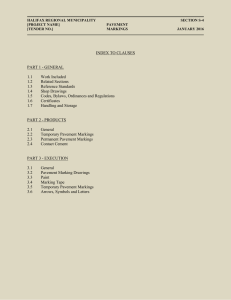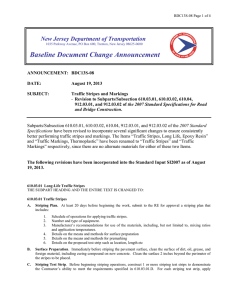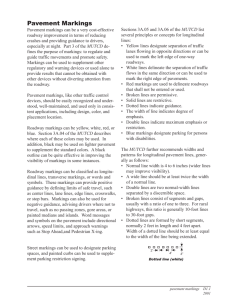Pavement Markings - Texas A&M University
advertisement
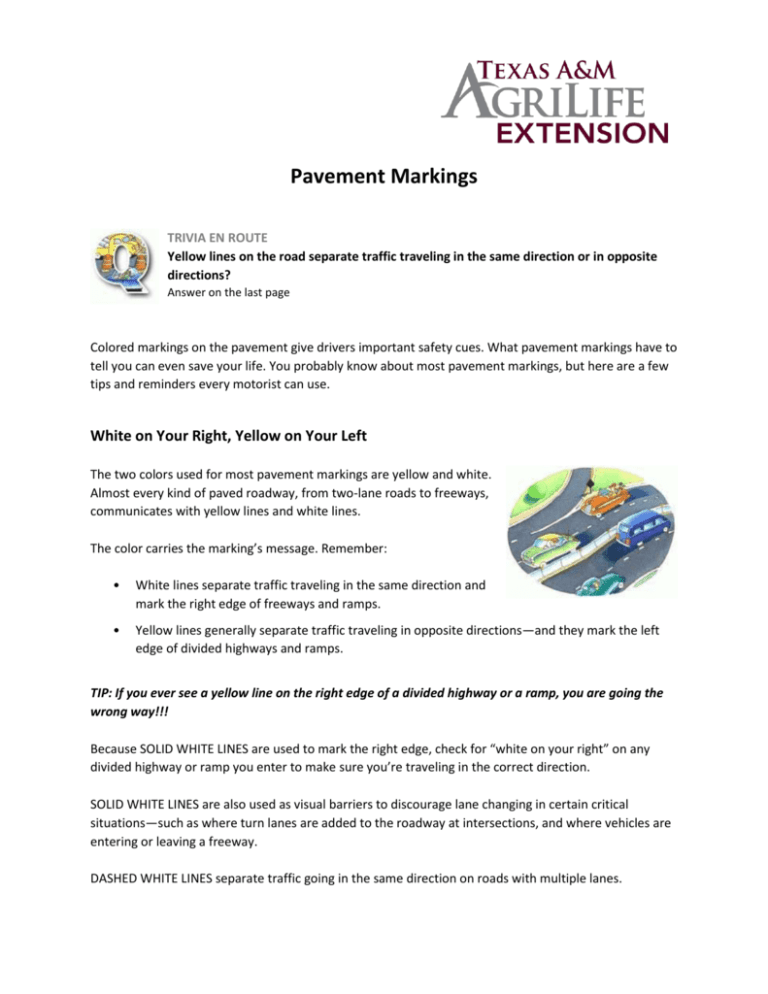
Pavement Markings TRIVIA EN ROUTE Yellow lines on the road separate traffic traveling in the same direction or in opposite directions? Answer on the last page Colored markings on the pavement give drivers important safety cues. What pavement markings have to tell you can even save your life. You probably know about most pavement markings, but here are a few tips and reminders every motorist can use. White on Your Right, Yellow on Your Left The two colors used for most pavement markings are yellow and white. Almost every kind of paved roadway, from two-lane roads to freeways, communicates with yellow lines and white lines. The color carries the marking’s message. Remember: • White lines separate traffic traveling in the same direction and mark the right edge of freeways and ramps. • Yellow lines generally separate traffic traveling in opposite directions—and they mark the left edge of divided highways and ramps. TIP: If you ever see a yellow line on the right edge of a divided highway or a ramp, you are going the wrong way!!! Because SOLID WHITE LINES are used to mark the right edge, check for “white on your right” on any divided highway or ramp you enter to make sure you’re traveling in the correct direction. SOLID WHITE LINES are also used as visual barriers to discourage lane changing in certain critical situations—such as where turn lanes are added to the roadway at intersections, and where vehicles are entering or leaving a freeway. DASHED WHITE LINES separate traffic going in the same direction on roads with multiple lanes. Yellow Lines and the ABCs of Passing on a Two-Lane Road A. DOUBLE SOLID YELLOW center lines mean no passing is allowed in either direction. B. A SINGLE DASHED YELLOW center line tells you that you are allowed to pass other vehicles if the road ahead is clear; but vehicles coming the opposite direction are allowed to pass, too. C. A combination of SOLID and DASHED YELLOW center lines communicates two messages: Examples of Pavement Markings • • If the dashed line is in your lane, you are allowed to pass with caution. If the solid line is in your lane, you are not allowed to pass. Special Markings RAISED PAVEMENT MARKERS Some roads use yellow and white raised pavement markers; either with painted lines or by themselves. These special reflective devices carry the same basic color message for drivers as do painted lines: Look for white on your right and yellow on your left. SCHOOL ZONES AND RAILROAD CROSSINGS Special pavement markings tell drivers about special locations. The approach to school zones and railroad crossings have distinctive pavement markings that warn drivers to use extra caution. When you see these markings, slow down and pay attention to the warning signs that appear along with these special markings. TRIVIA EN ROUTE ANSWER Yellow lines on the highway, whether solid or dashed, generally separate traffic going in opposite directions. Source: US Department of Transportation, Federal Highway Administration website http://safety.fhwa.dot.gov/media/ryr.htm Educational programs of the Texas A&M AgriLife Extension Service are open to all people without regard to race, color, sex, religion, national origin, age, disability, genetic information, or veteran status. The Texas A&M University System, U.S. Department of Agriculture, and the County Commissioners Courts of Texas Cooperating.
